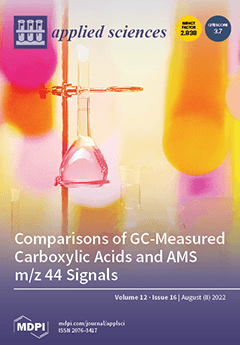Soil erosion is a selective process which removes the light fraction comprised of soil organic carbon (SOC) and colloidal particles of clay and fine silt. Thus, a large amount of carbon (C) is transported by erosional processes, and its fate (i.e., emission, redistribution,
[...] Read more.
Soil erosion is a selective process which removes the light fraction comprised of soil organic carbon (SOC) and colloidal particles of clay and fine silt. Thus, a large amount of carbon (C) is transported by erosional processes, and its fate (i.e., emission, redistribution, burial, and translocation into aquatic ecosystems) has a strong impact on the global carbon cycle. The processes affecting the dynamics of soil C emission as greenhouse gases (i.e., CO
2, CH
4, N
2O), or its deposition and burial, vary among different stages of soil erosion: detachment, transport, redistribution, deposition or burial, and aquatic ecosystems. Specific biogeochemical and biogeophysical transformative processes which make erosion-transported carbon a source of C emission are determined by the type of erosion (rill vs. inter-rill in hydric and saltation erosion vs. air-borne dust in aeolian erosion), soil temperature and moisture regimes, initial SOC content, texture, raindrop-stable aggregates and water repellency, crusting, slope gradient, physiography and the slope-based flow patterns, landscape position, and the attendant aerobic vs. anaerobic conditions within the landscape where the sediment-laden C is being carried by alluvial and aeolian processes. As much as 20–40% of eroded SOC may be oxidized after erosion, and erosion-induced redistribution may be a large source of C. In addition, human activities (e.g., land use and management) have altered—and are altering—the redistribution pattern of sediments and C being transported. In addition to O
2 availability, other factors affecting emissions from aquatic ecosystems include sub-surface currents and high winds, which may also affect CH
4 efflux. The transport by aeolian processes is affected by wind speed, soil texture and structure, vegetation cover, etc. Lighter fractions (SOC, clay, and fine silt) are also selectively removed in the wind-blown dust. The SOC-ER of dust originating from sand-rich soil may range from 2 to 41. A majority of the C (and nutrients) lost by aeolian erosion may be removed by saltation. Even over a short period of three seasons, wind erosion can remove up to 25% of total organic C (TOC) and total N (TN) from the top 5 cm of soil. A large proportion of C being transported by hydric and aeolian erosional processes is emitted into the atmosphere as CO
2 and CH
4, along with N
2O. While some of the C buried at the depositional site or transported deep into the aquatic ecosystems may be encapsulated within reformed soil aggregates or protected against microbial processes, even the buried SOC may be vulnerable to future loss by land use, management, alkalinity or pH, the time lag between burial and subsequent loss, mineralogical properties, and global warming.
Full article





